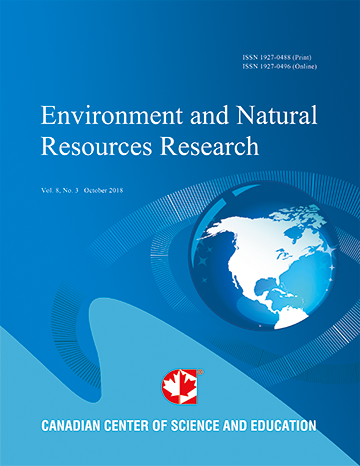Litterfall and Nutrient Returns in the Rainforest of Southwestern Cameroon: Some Implications for Tropical Forest Productivity
- Mary E. Ngaiwi
- Ernest L. Molua
- Andrew E. Egbe
Abstract
Understanding litterfall and macronutrients in the rainforest ecosystem gives baseline information on nutrient dynamics. Litterfall and macronutrients return were studied for 12 months from November 2011 to October 2012 in a 50 ha plot in the Takamanda National Park, South-western Cameroon. This study evaluates the pattern and quantity of litterfall, with implications for forest productivity. It thus assesses the macronutrient concentrations, nutrient inputs into the surface soil, nutrient retranslocation by some key tree species and some physicochemical properties of the soil in the study site. Litter traps where placed randomly in the study plot. Litter was collected every fortnight sorted and air-dried after which they were oven dried at 70°C to constant weight. Soils were sampled from three flanks at depths of 0-10cm, 10-20cm and 20-30cm. Percentage retranslocation or accumulation before leaf fall was calculated from freshly fallen litter and mature green leaf. Total annual litterfall was 5.46 t/ha/yr and this varied with the seasons. Leaf litter contributed 90.9% of total litterfall. The concentration of N and Ca was higher than other nutrient elements Mg, K, P in all litter fragments. Nitrogen had the highest total nutrient input with the following pattern N>Ca>K>Mg>P (85.36 kg/ha/yr> 56.71 kg/ha/yr> 23.1 kg/ha/yr> 17.32 kg/ha/yr> 4.27 kg/ha/yr) respectively.Pterocarpus soyauxii had the highest retranslocation percentages for all the macronutrients studied compared to Afziliabipidensis and Terminalia ivorensis. It was observed that Terminalia ivorensis could be a good nutrient recycler that could be used to improve on degraded soils. It was however observed that Ca and Mg tend to accumulate in leaf litter for all the three species.- Full Text:
 PDF
PDF
- DOI:10.5539/enrr.v8n3p25
Journal Metrics
Google-based Impact Factor (2016): 6.22
h-index (November 2017): 12
i10-index (November 2017): 19
h5-index (November 2017): 11
h5-median (November 2017): 12
Index
Contact
- Emily LinEditorial Assistant
- enrr@ccsenet.org
